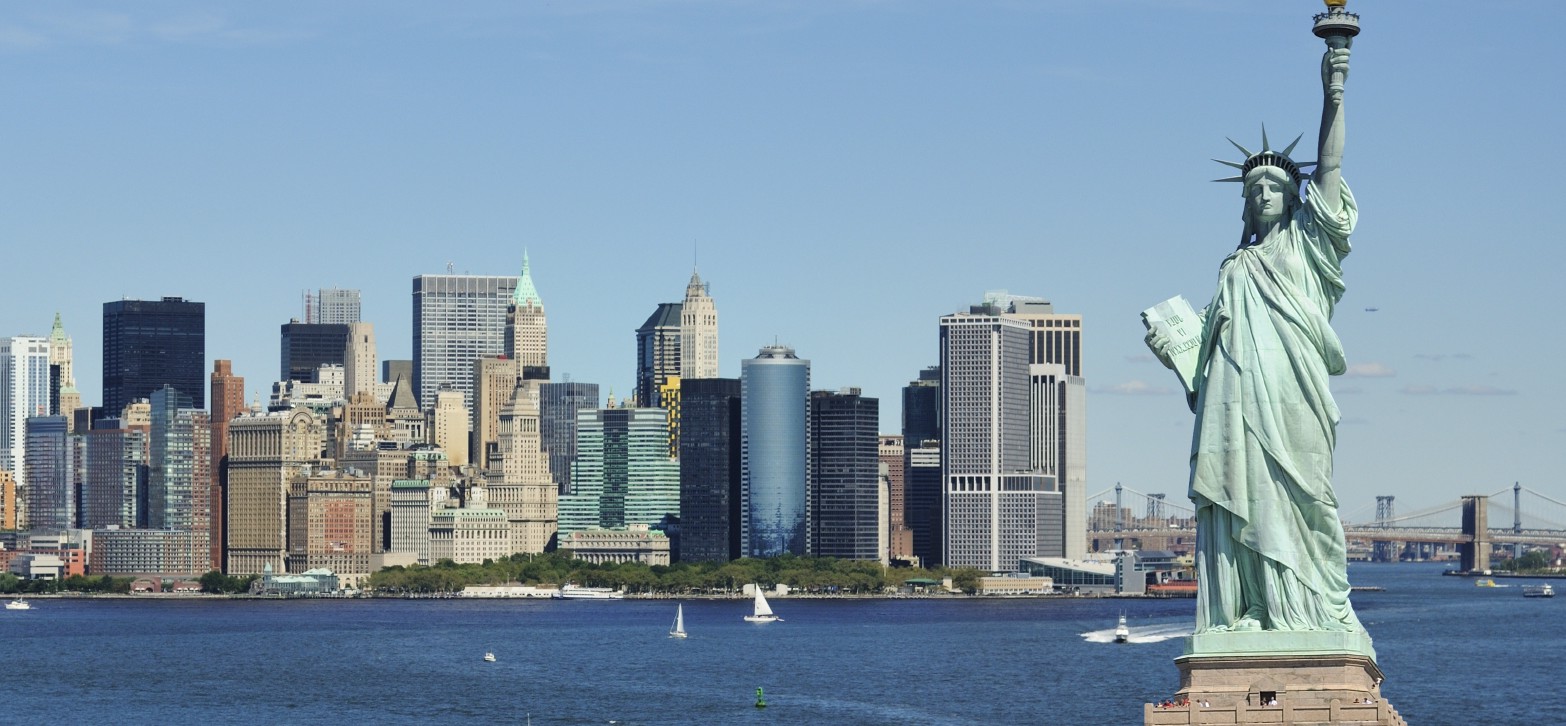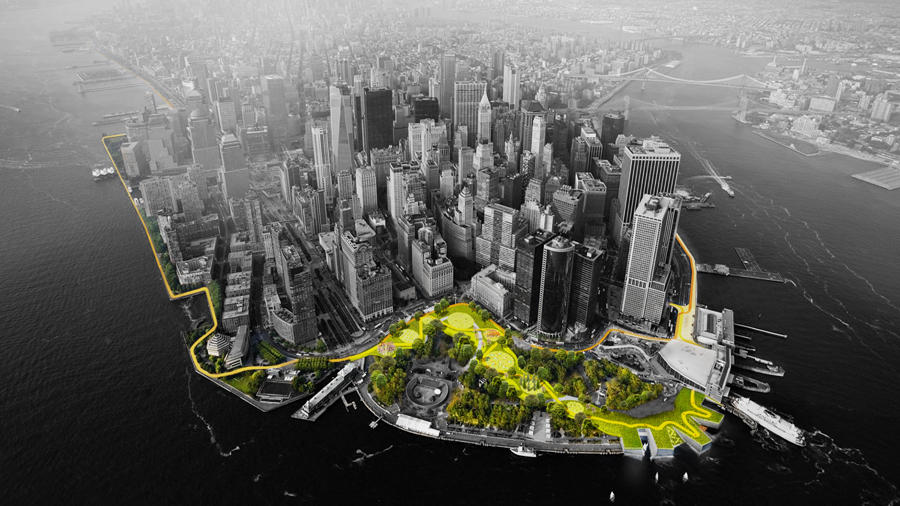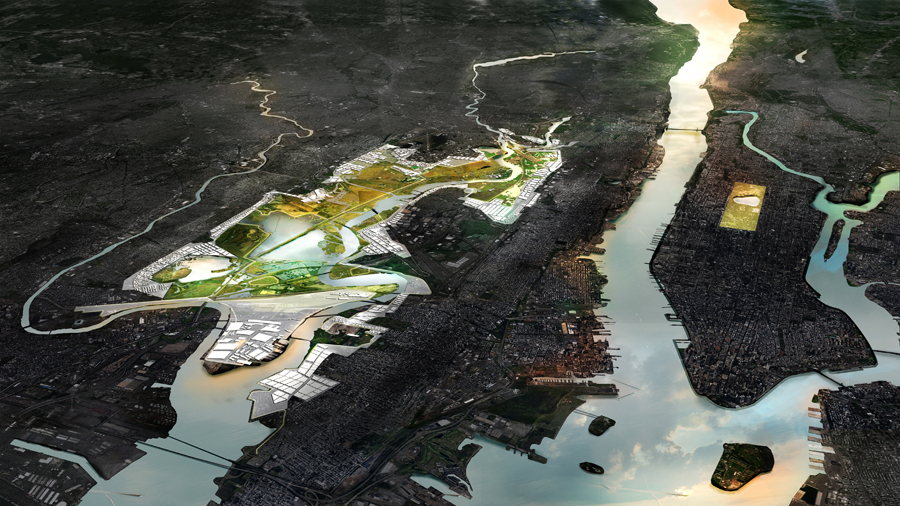In October 2012, Hurricane Sandy rampaged through the East Coast, bringing 80-mile-an-hour winds that destroyed homes, downed trees and left more than 5 million people in the mid-Atlantic region without power. The total damage was estimated to be $75 billion – one of the costliest natural disasters ever faced in the United States.
In the three years since, the federal government has invested roughly $15.5 billion in post-Sandy recovery efforts, including direct assistance to disaster survivors and more than $13 billion to state, local and tribal governments. But unlike prior disaster recovery efforts, the federal government’s approach after Sandy was revolutionary in one respect: for the first time ever, it included an explicit mandate to invest in efforts to improve the “resilience” of state, local and tribal communities in the face of future disasters.
Under the Sandy Recovery Improvement Act passed by Congress in 2013, federal disaster relief is no longer just about helping families and communities “pick up the pieces” after the fact. Rather, federal policy now encourages states, cities and tribes to make resilience as well as recovery a priority in their thinking about disaster response. The result could be a new wave of policy innovation across the country – and with it, important social and economic gains for communities in addition to better disaster readiness.
Federal disaster policy now includes an explicit mandate to invest in resilience.
This concept of “resilience” is a focus of The Rockefeller Foundation. For the past ten years, The Rockefeller Foundation has helped communities of all kinds build resilience – in other words, helping them prepare for, withstand, recover and even grow and transform in the face of shocks and stresses.
The roots of this work started to take hold when we invested in New Orleans after Hurricane Katrina had left the city paralyzed and the failures of the levees exposed major challenges in race and class that had been building for decades. Our experience in New Orleans reinforced the view that federal disaster response policy needed to include a new focus on resilience. Resilience includes not just the shocks that cities face — such as a hurricane — but also the stresses that weaken the fabric of a city on a day-to-day or cyclical basis. By addressing both the shocks and the stresses, a city becomes more able to respond to adverse events and generally better equipped to deliver basic functions in both good times and bad, to all populations.
Katrina also brought home the new normal cities all over the world will face in the 21st century: more storms, more disruption, and more impact on poor and vulnerable people.
It also became clear that the increasing prevalence of natural disasters would mean greater need for more funding to respond to these disruptions. From 2011 to 2013, American taxpayers spent more than $136 billion on federal disaster relief, or about $400 per household per year. As a philanthropy, we knew that the more we could help communities face their adversities before disaster strikes, the less the taxpayer would have to pay to help them recover after – and fewer lives and property would be lost in the process.
This proposed project, the Dryline, would protect Manhattan from the impact of future superstorms.
That wasn’t all. We were learning that communities that invested in resilience were seeing benefits in times of calm, as well as in times of crisis. Investments, for example, that the city of Rotterdam has made in building world-class infrastructure to protect against water threats have become part of the lifeblood of the economic heart of the port city. With nearly 80 percent of the city below sea level, Rotterdam is building “floating neighborhoods” and “water plazas” as part of its pledge to become “100 percent climate-proof” by 2025. In San Francisco, efforts to quake-proof the city’s housing stock brought together financial institutions, urban planners, architects, contractors, and property owners, which provided a new opportunities for collaboration among these groups that benefits the city in good times, as well as bad. Medellin, the murder capital of Latin America in the early 1990s, showed that a focus on building economic resilience through more transit to marginalized areas could bring down crime rates in the 2000s.
Murder rates – which had been driven in part by the remoteness of citizens on its hillsides and lack of access to city life below – are down 90% from their high in 1991.
Economic gains, social cohesion, safer communities – these are what we call the “resilience dividend” – the idea that an investment in resilience makes a city better in the short-term, as well as the long run. We thought the idea was a powerful one – and were already putting it into practice in cities in India, Indonesia, Thailand and Vietnam when Superstorm Sandy hit the East Coast in 2012.
Given our experience in resilience, The Rockefeller Foundation was invited by Governor Andrew Cuomo to lead a commission that made recommendations for how New York State could build more resilient communications, infrastructure, and systems to ensure that what happened with Sandy didn’t happen again. The recommendations also informed the federal Hurricane Sandy Rebuilding Task Force’s own set of recommendations, released in 2013.
One of these recommendations was to create a competition to incentivize policy innovation, which ultimately resulted in the launch of Rebuild By Design (RBD), a partnership with the U.S. Department of Housing and Urban Development to shape the way $1 billion in recovery dollars would be spent in the wake of Superstorm Sandy. The Rockefeller Foundation stepped up with a $4 million investment to fund RBD with the goal of advancing proposals that would help communities realize projects that would better protect them in the wake of future storms, rather than just building back to the way things were. Teams of architects, engineers, city planners, social scientists and civic organizations came to the same table to create some truly extraordinary ideas. In 2014, 10 teams were named winners and funded by HUD.
Among them: a protective system, nicknamed the Dryline, to stretch around the tip of Manhattan and to include walls that can be rolled down on the underside of highways during flooding events. In dryer times, the Dryline infrastructure will also double as parks, skateboard ramps, and other recreational space which is lacking in this part of the city. Another design in the Meadowlands, New Jersey, put forth an integrated vision for connecting a system of natural berms and marshes (which would protect against ocean surges) with transit and development opportunities. A third project on the South shore of Staten Island is combining oyster reef restoration efforts with educational programs. Today, many of these projects are in the environmental study phase, and are actively seeking and securing other funding.
This proposed project in the Meadowlands would combine environmental protection with new commercial and transit opportunities.
Rebuild by Design was a smart use of both philanthropic and government dollars: the $4 million the foundation gave for the competition leveraged the smarter and more resilient deployment of nearly $1 billion in recovery funds.
More than the projects themselves, Rebuild by Design helped transform the mindset of how the government spends its disaster funding, We weren’t the only ones to consider this an innovation: In 2013, CNN named RBD among its “Big Ten Ideas” of the year. In 2015, RBD was named the winner of the Administrative Conference of the United States Walter Gellhorn Innovation award, presented to the federal agency “with the best model practice that can be adopted government-wide.”
Based on the initial success of Rebuild by Design, HUD has taken this resilience challenge mindset national. In June 2014, President Obama announced the National Disaster Resilience Competition, which has made a further $1 billion in funding available for communities affected by recent disasters. Sixty-seven communities were eligible to apply, and 38 ultimately submitted proposals. Along the way, The Rockefeller Foundation provided an additional $8 million for training and expertise to help community leaders shape their applications through a resilience mindset.
It was long assumed in the philanthropy sector that you get what you pay for, and for a while that was true: more money would translate to more bed nets, more vaccines, and greater impact. But in the 21st century, we know this to be a false prescription. And this is actually good news, since philanthropy can’t solve the world’s problems alone. At the same time, the challenges we were endowed to solve have grown more intertwined and much more complex. By thinking strategically about how and when to deploy our funding, we can use philanthropic dollars as leverage: either to motivate government or the private-sector to put more skin in the game, or to influence the way pre-existing funds are spent to achieve greater impact.
We are proud of what RBD has achieved and are excited to see its physical manifestations in New York and New Jersey in coming years. But we are even more pleased with how it has started to change thinking and action on a local and national scale. We can’t solve all of the world’s problems for $4 million a pop, but by using our influence, leverage, and risk capital, we can maximize our impact, every time.
Neill Coleman is Vice President, Global Communications, at The Rockefeller Foundation.





